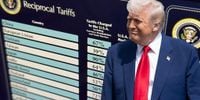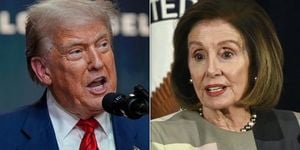On an unseasonably brisk November morning in Washington, the Supreme Court found itself at the center of a political and economic storm, hearing arguments that could upend one of President Donald Trump’s signature policy moves: the imposition of sweeping tariffs under the 1977 International Emergency Economic Powers Act (IEEPA). The stakes, as described across major news outlets from the Associated Press to The New York Times, are nothing short of monumental—politically, financially, and institutionally.
President Trump, never one to shy away from controversy, has made tariffs a cornerstone of both his economic and foreign policy. Earlier this year, he invoked IEEPA to declare national emergencies—first in February, targeting Canada, Mexico, and China over illegal immigration and drug trafficking, and then in April, citing the United States’ longstanding trade deficits as a national crisis to justify worldwide tariffs. According to the Associated Press, this marked the first time the law has been used in such a way, raising eyebrows among legal scholars and, crucially, the Supreme Court justices themselves.
During oral arguments on November 5 and November 10, 2025, skepticism was palpable from the bench. Chief Justice John Roberts, a pivotal swing vote, questioned the administration’s authority, noting, "It's been suggested that the tariffs are responsible for significant reduction in our deficit. I would say that's raising revenue domestically." Justice Neil Gorsuch, another Trump appointee, added historical context, saying, "The power to reach into the pockets of the American people is just different and it's been different since the founding." Justice Sonia Sotomayor was even more direct: “You want to say tariffs are not taxes, but that’s exactly what they are. They are generating money from American citizens.”
At the heart of the matter is whether the president can sidestep Congress—the body constitutionally empowered to levy taxes and tariffs—by invoking emergency powers. The justices’ questions, as reported by AP and The New York Times, suggest a majority may be leaning toward reining in the executive branch’s reach. Justices Amy Coney Barrett and Roberts, both viewed as crucial votes, expressed unease about the breadth of power Trump claimed under IEEPA, with Barrett pressing on whether Congress might have intended for the president to use “weaker medicine” like tariffs rather than a complete trade embargo as leverage.
The political and financial ramifications are immense. Trump has repeatedly touted the tariffs as a boon for American coffers. In a recent Truth Social post, he pledged a “dividend of at least $2,000 a person (not including high income people!) will be paid to everyone,” funded by tariff revenue. He’s also floated the idea of using the windfall to pay down the national debt, which now exceeds $38 trillion. The Congressional Budget Office (CBO), described by the White House as "left-wing" but generally regarded as nonpartisan, projected that tariffs implemented from January 6 to August 19, 2025, would reduce federal deficits by $4 trillion over the next decade. Customs revenues for fiscal year 2025 soared to $195 billion, more than double the CBO’s previous projection of $80 billion, according to NPR and CBO data.
Yet, as the Center for American Progress and Yale Budget Lab have pointed out, there’s a catch: the economic pain is being felt most acutely by American households. Treasury Secretary Scott Bessent admitted that importers pay the tariffs but often pass the costs on to consumers. Major retailers like Walmart, Adidas, Home Depot, and Best Buy have already announced price hikes, and the Yale Budget Lab estimates the new tariffs will cost the average U.S. household $1,800 in the short term. The CBO further warns that, while tariff revenue may shrink the deficit, it will also slow economic growth and drive up prices.
The legal uncertainty has already triggered a flurry of activity in the lower courts. As reported by Nexstar Media and others, businesses are racing to file lawsuits in the Court of International Trade, seeking refunds for tariffs they claim were unlawfully collected. Turn5, an auto parts e-commerce business, noted in its lawsuit that even if the Supreme Court strikes down the tariffs, importers are not guaranteed refunds without individual judicial relief. U.S. Trade Representative Jamieson Greer told Fox News that, should the administration lose, he’ll “hand that file” to the Treasury Department to process refunds, coordinating with the court to determine schedules and rights. Greer estimated that the reciprocal tariffs have already brought in more than $100 billion.
The specter of mass refunds looms large. The Trump administration has acknowledged that a Supreme Court loss would require refunding billions—possibly trillions, according to Trump—to businesses. Justice Amy Coney Barrett called the potential fallout “a mess.” Neal Katyal, representing the businesses challenging the tariffs, concurred, describing the administrative process as "difficult, absolutely." The government has faced similar, though smaller-scale, challenges before: after the Supreme Court struck down a harbor maintenance tax in 1998, it took about two years and $750 million in refunds to resolve the aftermath. This time, the stakes are exponentially higher.
Trump himself has painted the prospect of a loss in apocalyptic terms, warning that it would turn the United States into a “third-world country” and devastate trade deals built on projected tariff earnings. “I’m going to hope that we win,” he said, “I can’t imagine that anybody would do that kind of devastation to our country.”
If the Supreme Court does strike down Trump’s use of IEEPA, the administration would be forced to explore other avenues for imposing tariffs. According to legal experts cited by Nexstar Media, several statutes could be invoked, such as sections 122, 201, and 301 of the Trade Act of 1974, Section 232 of the 1962 Trade Expansion Act, and Section 338 of the Tariff Act of 1930. Each comes with its own set of limitations and procedural hurdles—none offering the sweeping authority Trump sought under IEEPA. As Justice Samuel Alito observed, the administration could attempt to reimpose tariffs under a new legal authority, prompting yet another round of litigation that could drag on for months or years, all while the financial stakes continue to mount.
For now, the timeline for a Supreme Court decision remains uncertain. Traditionally, major rulings are handed down by late June or early July, but this case could see a faster resolution given its urgency. The justices’ brisk schedule—agreeing to hear the case in September and holding arguments just two months later—suggests that a decision could come at any time.
As the nation waits, the implications stretch far beyond the courtroom. American businesses and households are bracing for continued uncertainty, and the outcome will shape not only the balance of power between Congress and the presidency but also the everyday cost of living for millions. The only certainty is that, whatever the court decides, the ripple effects will be felt throughout the economy and the political landscape for years to come.





